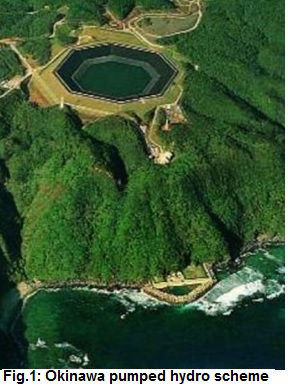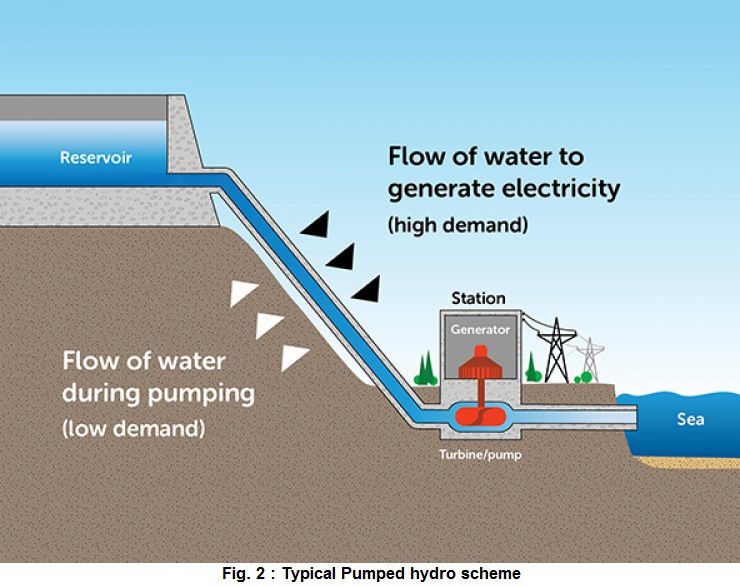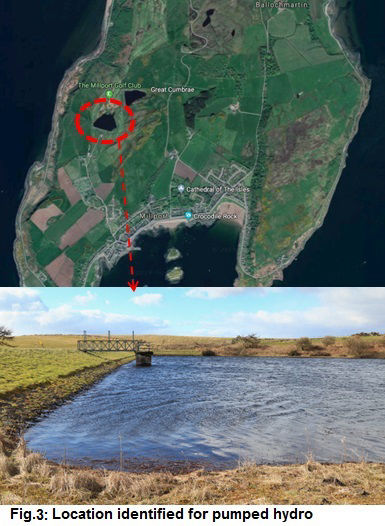
The pumped-storage hydro system on the northern coast of Okinawa Island, Japan, is the the world's first pumped-storage facility to use seawater for storing energy. The power station was a pure pumped-storage facility, using the Philippine sea as its lower reservoir, with an effective drop of 136 meters, and maximum flow of 26 m³/s (shown in figure 1). Its pipelines and pump turbine were installed underground. Its maximum output was approximately 2.1% of the maximum power demand in the Okinawa Island recorded on August 3, 2009. The upper reservoir, artificially excavated, was approximately 600 meters away from the shoreline and approximately 150 meters above sea level. It had an octagonal planar shape with a maximum width of 252 meters. Its maximum depth was 25 meters and its effective storage capacity was 564,000 cubic meters. The entire inner surface of the reservoir was covered with an impermeable liner to prevent seawater from leaking and damaging the surrounding vegetation[1].

